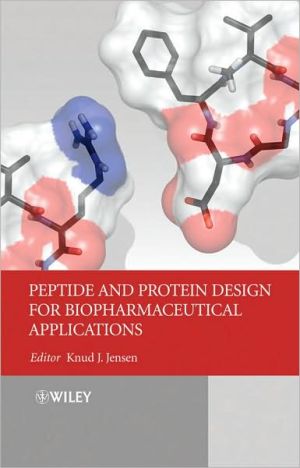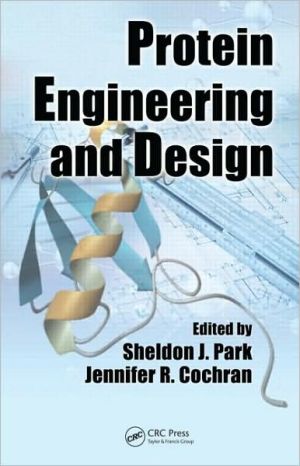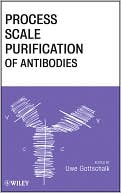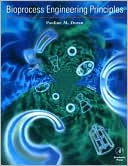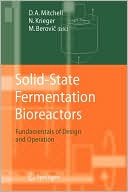Peptide and Protein Design for Biopharmaceutical Applications
Peptides serve as effective drugs in the clinic today. However the inherent drawbacks of peptide structures can limit their efficacy as drugs. To overcome this researchers are developing new methods to create ‘tailor-made’ peptides and proteins with improved pharmacological properties.\ Design of Peptides and Proteins provides an overview of the experimental and computational methods for peptide and protein design, with an emphasis on specific applications for therapeutics and biomedical...
Search in google:
Peptides serve as effective drugs in the clinic today. However the inherent drawbacks of peptide structures can limit their efficacy as drugs. To overcome this researchers are developing new methods to create ‘tailor-made’ peptides and proteins with improved pharmacological properties. Design of Peptides and Proteins provides an overview of the experimental and computational methods for peptide and protein design, with an emphasis on specific applications for therapeutics and biomedical research. Topics covered include: Computer modeling of peptides and proteinsPeptidomimeticsDesign and synthesis of cyclic peptidesCarbohydrates in peptide and protein designDe novo design of peptides and proteinsMedical development applicationsAn extended case study – the design of insulin variants Design of Peptides and Proteins presents the state-of-the-art of this exciting approach for therapeutics, with contributions from international experts. It is an essential resource for academic and industrial scientists in the fields of peptide and protein drug design, biomedicine, biochemistry, biophysics, molecular modelling, synthetic organic chemistry and medicinal/pharmaceutical chemistry.
List of Contributors ixPreface xi1 Introduction Knud J. Jensen 12 Computational Approaches in Peptide and Protein Design: An Overview Gregory V. Nikiforovicb Garland R. Marshall 52.1 Introduction 52.2 Basics and Tools 62.2.1 The Importance of Computational Approaches 62.2.2 Tools and Procedures: Force Fields and Sampling 92.3 Computational Study of Cyclopentapeptide Inhibitors of CXCR4 312.3.1 The 3D Pharmacophore Model for FC131 322.3.2 A 3D Model of the TM Region of CXCR4 362.3.3 Docking of FC131 to CXCR4 39Acknowledgements 42References 423 Aspects of Peptidomimetics Veronique Maes Dirk Tourwé 493.1 Introduction 493.2 Modified Peptides 513.3 Pseudopeptides 653.4 Secondary Structure Mimics (Excluding Turn Mimics) 753.4.1 β-strand Mimetics 753.4.2 Helix Mimetics 873.5 Examples of Peptidomimetics 923.6 Conclusion 104References 1054 Design of Cyclic Peptides Oliver Demmer Andreas O. Frank Horst Kessler 1334.1 Introduction 1334.1.1 Pharmaceutical Research Today 1334.1.2 General Advantages of Cyclic Peptide Structures 1344.1.3 Examples of Cyclic Peptides of Medicinal Interest 1354.1.4 General Considerations 1374.2 Peptide Cyclization 1384.2.1 Possibilities of Peptide Cyclization 1384.2.2 Synthesis of Cyclic Peptides 1394.2.3 Chemical Modifications of Cyclic Peptides 1414.2.4 Concluding Remarks 1464.3 Conformation and Dynamics of Cyclic Peptides 1464.3.1 Reductions in Conformational Space 1464.3.2 Conformational Arrangements in Cyclic Structures 1484.3.3 Flexibility of Cyclized Scaffolds 1514.3.4 Experimental Structure Characterization 1524.4 Concepts inthe Rational Design of Cyclic Peptides 1544.4.1 The Influence of Amino Acid Composition 1544.4.2 The Dunitz-Waser Concept 1554.4.3 The Spatial Screening Technique 1564.4.4 General Strategy for Finding Active Hits 1574.5 Examples of Cyclic Peptides as Drug Candidates 1594.5.1 Cilengitide as Integrin Inhibitor 1594.5.2 CXCR4 Antagonists 1634.5.3 Sandostatin and the Veber-Hirschmann Peptide as Examples of Rational Design 1644.6 Conclusion 166References 1665 Carbohydrates in Peptide and Protein Design Knud J. Jensen Jesper Brask 1775.1 Introduction 1775.2 Configurational and Conformational Properties of Carbohydrates 1785.3 Carbohydrates in Peptidomimetics 1815.4 Glycopeptides 1835.5 Carbohydrates as Scaffolds in the Design of Nonpeptide Peptidomimetics 1855.6 Sugar Amino Acids 1875.7 Cyclodextrin-Peptide Conjugates 1935.8 Carboproteins: Protein Models on Carbohydrate Templates 1985.9 Conclusion 199References 2006 De Novo Design of Proteins Knud J. Jensen 2076.1 Introduction 2076.2 Secondary Structure Elements 2086.2.1 The α-helix 2086.2.2 The β-sheet 2146.2.3 Loops, Turns and Templates 2146.3 Assembling a Specified Tertiary Structure from Secondary Structural Elements 2156.3.1 Computational Methods 2156.3.2 Coiled Coils 2166.3.3 α-helical Bundles 2206.3.4 Fluorous Interactions 2256.3.5 Additional Topics 2286.4 Proteins on Templates 2296.5 Foldamers 2346.6 Biopharmaceutical Applications of De Novo Design 2366.6.1 α-helical Structures in Biopharmaceutical Applications 2366.6.2 Foldamers in Biopharmaceutical Applications 238References 2387 Design of Insulin Variants for Improved Treatment of Diabetes Thomas Hoeg-Jensen 2497.1 Introduction 2497.2 Diabetes Management and the Need for Insulin Engineering 2517.3 Insulin Structure 2567.4 Prolonged-acting Insulin Solids 2587.5 Prolonged-acting Insulin Solutions 2597.6 Fast-acting Insulins 2657.7 Glucose-sensitive Insulin Preparations 2677.8 Alternative Insulin Delivery 2717.9 Insulin Mimetics 2727.10 Pushing the Limits of Insulin Engineering 2737.11 Conclusion 274References 275Index 287
\ From the Publisher"This book provides a comprehensive review of the many approaches undertaken over the yearsto develop peptide-based and peptide-mimetic-based drugs." (Journal of Medicinal Chemistry, June 2010)\ \ \
